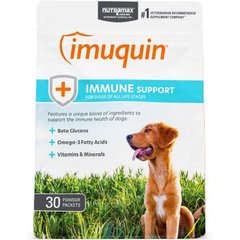Are Dogs Really Colorblind?
Most dog owners assume their pups are colorblind, a notion that’s not entirely true. While our pets' color vision is different from ours, they don’t view the world in only black and white. Here’s the science behind color vision and what we can do to help our dogs' eyesight.
Colors Dogs Can See
Color vision is based in the cones of the eye, specifically the number of pigment classes found in the retina. The richness of color vision depends on the amount of color cones and degrees to which they overlap, according to the Optics and Physiology of Vision. Humans are trichromatic, which means they have three classes of cones. Dogs are dichromatic, meaning there are only two classes of cones in their eyes that contain the photo pigments that allow them to see color.
Most people who are colorblind are usually missing their red or green photo pigment, similar to dogs and horses. Dogs' color vision is comparable to humans missing the green cone population, according to the Optics and Physiology of Vision. We know dogs have capabilities for seeing color, but documenting it can be challenging. They’re able to pick toys based off of color, but since their greens are more muted, their ability to discern colors isn’t the same as ours, Christin Fahrer, DVM, MS, Diplomate ACVO said.
While dogs don’t perceive colors the same way we do, they don’t seem to be negatively affected by their lack of color perception. In low light conditions, dogs see longer wavelengths of light—something naturally beneficial for predators that hunt in those conditions, William Miller DVM, MS, Diplomate ACVO said.
Vet Recommended Health Support
- Nutramax Imuquin Immune Support Powder Immune Supplement for Dogs, 30 count$24.99Chewy Price
- Purina Pro Plan Veterinary Diets FortiFlora Powder Probiotic Digestive Supplement for Dogs, 30 count$30.99Chewy Price
- Purina Pro Plan Adult Sensitive Skin & Stomach Salmon & Rice Formula Dry Dog Food, 16-lb bag$54.48Chewy Price
- Virbac Epi-Otic Advanced Ear Cleaner for Dogs & Cats, 4-fl oz bottle$13.19Chewy Price
Do Dogs Even Need Color Vision?
“Color vision for dogs is great for them, but is kind of a gift because I don’t know that they really need it to function,” Dr. Fahrer said. “Their retinas are built to focus on movement for survival; if they can focus on prey running, they don’t care if it’s brown or green of blue.”
Additionally, a dog’s sense of smell is so powerful that it often supersedes visual cues, Fahrer said. We know how to use this to our strength when offering our dogs food or treats for training, but there are ways to use visual cues to enhance play with our dogs as well. Toys and balls that have a high color contrast, like orange or neon, are great options to use when playing with your dog.
The best way to preserve vision, Dr. Miller said, is good healthcare. Feeding our dogs a healthy, balanced diet and providing them with the proper exercise is the best thing we can do for their wellbeing and vision. There is some anecdotal evidence to support antioxidants boosting retinal health as well, Dr. Miller said, but what he recommends most is good veterinary care and a good diet.
Every year, the American College of Veterinary Opthamologists provides free eye exams for service dogs throughout the country. The program examines over 5,400 dogs annually and looks to catch problems before they can potentially take dogs out of service. Learn more about the exam here.




